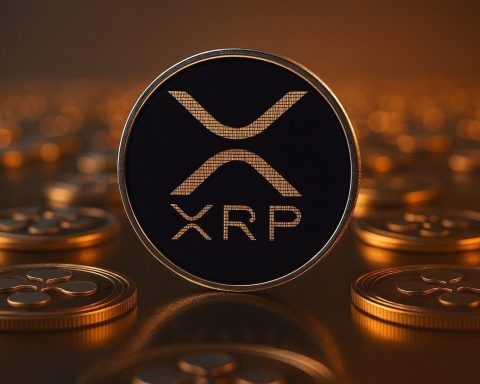Solana’s native token SOL is trading in the mid‑$130s on Tuesday, November 25, 2025, extending a rebound from last week’s lows near $121 while still sitting well below its late‑October peak around $197. [1]
A rare 20‑day streak of net inflows into newly launched Solana spot ETFs, a controversial “double disinflation” proposal that would accelerate the network’s supply slowdown, and fresh regulatory and derivatives developments are all feeding into today’s price action. [2]
Over the last 24 hours, SOL has gained roughly 4–6%, outpacing Bitcoin and Ethereum as altcoin ETFs and on‑chain activity in protocols like x402 draw capital back toward the Solana ecosystem. [3]
Solana price today: key levels and recent performance
Across major data providers this afternoon, Solana is quoted between roughly $134 and $138:
- Coindesk lists SOL around $135.6. [4]
- FXEmpire’s Solana page shows about $134.65. [5]
- YCharts puts today’s level nearer $138.4, up about 5–6% versus yesterday. [6]
- Coinpaper, citing CoinGecko, reported $136.32 with a roughly 5% daily gain at mid‑day. [7]
Live dashboards at 99Bitcoins show SOL up around 4.7% on the day, with 24‑hour volume above $5 billion, versus a roughly 1–2% move for Bitcoin and 3–4% for Ether. [8]
The bounce comes after a sharp correction. Cointelegraph notes that SOL has fallen from about $197 on October 26 to the mid‑$130s today, a drop of roughly 30% in a month, while CoinCentral’s analysis pegs the token down about 30% over the last 30 days despite a 14% recovery from Friday’s low near $121.50. [9]
Despite that drawdown, Solana remains far above its bear‑market lows but still well below its all‑time high near $293 set in January 2025, according to BeInCrypto and MetaMask’s price feed. [10]
Key technical zones
Market commentators today are focused on a handful of levels:
- Resistance:
- Support:
- CoinCentral and Coinpedia both point to the $120–$126 region as current structural support. Repeated tests of that band over the past two weeks may have weakened it, and Coinpedia’s analysis warns that a decisive breakdown could expose deeper targets toward the high‑double digits, including scenarios where bears eye levels as low as $70. [13]
On the derivatives side, CoinCentral reports that SOL perpetual futures funding has been negative since Friday, aggregate futures open interest has fallen about 27% in 30 days, and the monthly futures premium over spot has compressed to almost zero — all signs of reduced leveraged long interest and a cautious derivatives market despite today’s bounce. [14]
ETF inflows turn Solana into a yield play
While the spot price has been choppy, ETF money has been moving steadily in one direction: in.
Data from SoSoValue compiled by Coinpaper and CryptoTicker show that US spot Solana ETFs have now logged 20 consecutive days of net inflows, a rare run of uninterrupted institutional demand in a volatile market. [15]
- On Monday, Solana ETFs attracted about $58 million in new money, led by Bitwise’s BSOL product with roughly $39.5 million, its strongest daily inflow since early November. [16]
- Since launch in late October, the six listed Solana ETFs have drawn about $568 million in cumulative inflows and now hold around $843.8 million in net assets — roughly 1.1% of Solana’s market capitalization. [17]
A separate Cointelegraph analysis estimates that between November 3 and 24, Solana‑staking ETFs pulled in roughly $369 million, even as Bitcoin ETFs saw about $3.7 billion in redemptions and Ether ETFs lost about $1.64 billion. [18]
Everstake co‑founder Bohdan Opryshko told Cointelegraph that both institutional and retail investors increasingly treat Solana as a yield‑generating asset rather than a pure speculative trade, pointing to typical native staking rewards in the 5–7% range — something spot Bitcoin ETFs cannot offer and that only a handful of Ethereum products currently replicate. [19]
Cointelegraph’s staking data show:
- Staked SOL has climbed from about 350 million to 407 million tokens this year.
- Around 67% of circulating SOL is currently staked, with whale delegators consolidating positions rather than exiting and retail delegators slowly increasing their commitments. [20]
Sebastien Gilquin of Trezor argues that this gives Solana “one of the strongest staking profiles” among major proof‑of‑stake chains, at a time when institutions are increasingly hunting for productive yield rather than just price exposure. [21]
DL News adds another angle: newly launched XRP and Solana ETFs have together generated just over $955 million in sales over the past month, diverging sharply from Bitcoin and Ether funds. One analyst quoted in the piece sees room for Solana to climb toward $160 as capital rotates from Bitcoin into altcoin ETFs — roughly 10–15% above today’s trading band. [22]
Large sellers on the other side
Not all flows are supportive, though. NewsBTC, citing on‑chain analytics from Lookonchain, reports that Pump.fun, a major Solana‑based launchpad, has allegedly sold around 4.19 million SOL between May 2024 and August 2025 and deposited roughly $436.5 million in USDC to Kraken since mid‑October — activity that may have amplified Solana’s slide from above $200 to this month’s lows around $120. [23]
Pump.fun has contested interpretations that frame these transfers as simple “dumping,” but the episode underscores how a handful of large ecosystem treasuries can materially influence Solana’s price dynamics in the short term. [24]
SIMD‑0411 and the “double disinflation” supply debate
Beyond ETF flows, the biggest medium‑term debate around Solana this week is about monetary policy.
Developers at Helius Labs have introduced Solana Improvement Document SIMD‑0411, a proposal to double Solana’s annual disinflation rate from 15% to 30%. [25]
Under the current schedule, Solana’s inflation gradually declines until it reaches a long‑term terminal rate of 1.5% around 2032. According to modeling shared in the proposal and summarized by Cointelegraph and BeInCrypto:
- SIMD‑0411 would bring that 1.5% terminal rate forward to around 2029.
- It would reduce projected future emissions by roughly 22–22.3 million SOL over the next six years, equivalent to about 3% of supply versus today’s trajectory. [26]
At today’s prices, Cointelegraph estimates that this is on the order of $3 billion in potential future staking rewards that would never be minted — a figure Cryptonews also highlights in a separate price‑prediction piece examining whether such a supply shock could support much higher valuations in future cycles. [27]
Crucially, the proposal has powerful backers inside the ecosystem. Solana’s Digital Asset Treasury DeFi Development Corp. (DFDV) — the third‑largest corporate SOL holder with about 2.2 million tokens — became the first treasury to publicly endorse SIMD‑0411, arguing that the current inflation schedule is out of step with the network’s maturity and is weighing on price. [28]
Benefits vs. validator risk
Supporters say accelerated disinflation could:
- Reduce structural sell pressure from staking rewards.
- Make SOL more comparable to other “hard” yield assets favored by institutions.
- Tighten circulating supply at precisely the moment ETFs are hoovering up coins. [29]
But the trade‑offs are real. BeInCrypto notes that modeling in the SIMD‑0411 draft suggests around 47 lower‑stake validators could become unprofitable by year three if yields fall too far, raising concerns that faster disinflation might concentrate power among large validators and undermine decentralization. [30]
For now, SIMD‑0411 is a proposal, not a done deal. The community is actively debating whether the promise of a faster path to scarcity outweighs the risks to validator diversity and staking economics.
On‑chain activity: x402, DeFi and Solana’s launchpad culture
Under the hood, Solana’s on‑chain metrics tell a mixed but active story.
BeInCrypto’s update today attributes part of SOL’s recent 5.4% rally to about $138.56 on November 24 to a surge in the x402 protocol, which processed over 500,000 transactions and more than $100,000 in volume over the November 22–23 weekend — a roughly 500% week‑on‑week increase in activity. [31]
Major exchanges including Binance, Coinbase and Bybit reported a tight trading range between about $136 and $139 during that move, underlining high liquidity and robust interest even in a choppy market. [32]
CoinCentral’s network analysis, however, highlights some pressure points:
- Total value locked (TVL) on Solana has dropped about 20% over the last month to roughly $10.5 billion.
- Weekly blockchain fee revenue is at its lowest level since May, indicating thinner margins for DeFi protocols.
- Despite that, Solana remains the leader in active addresses and transaction counts, with activity up about 13% over 30 days, while Ethereum’s fell around 15% over the same period. [33]
That combination — heavy usage, falling fees, and rising address counts — reflects a chain where user demand is strong but competition forces applications to fight hard for revenue.
Pump.fun, marketing tech and VC backing
A deep‑dive from TechNews180 published today illustrates how much of this activity is tied to high‑velocity token launches:
- Launchpad Pump.fun sees over 2,000 new tokens a day, with a trending algorithm that heavily favors projects generating at least 50 SOL in trading volume within their first six hours. Tokens that miss this threshold have about a 97% failure rate in terms of organic visibility. [34]
- Some teams are responding by using sophisticated “volume bot” services that simulate organic trading via aged wallets and randomized orders; the case study cited in the article claims these tools improved launch success metrics by roughly 1,800% versus traditional marketing alone. [35]
The report stresses that such tools cannot replace real fundamentals, but they do show how Solana’s memecoin and DeFi culture is intertwined with attention‑driven mechanics — something regulators, exchanges and users are watching carefully.
On a more conventional front, the same piece notes that crypto investment firm RockawayX closed a $125 million early‑stage fund earlier this year with a heavy Solana focus, already backing more than 15 Solana‑based projects and even investing in data‑center infrastructure in Europe to support the network. [36]
Taken together, the on‑chain data suggest an ecosystem that is still drawing long‑term capital and developer interest, even as TVL and fee revenue fluctuate.
Regulation, diversification and the macro backdrop
Regulatory signals and broader investor behavior also matter for Solana’s outlook.
SEC’s no‑action letter for Solana‑based Fuse
In a notable shift, the US Securities and Exchange Commission has issued a no‑action letter to Fuse, a Solana‑based decentralized physical infrastructure (DePIN) project, stating that it will not recommend enforcement if the FUSE token is sold as described in the project’s request. [37]
Cryptonews reports that:
- This is only the second DePIN project in recent months to receive such relief.
- The SEC’s letter emphasizes FUSE’s role as a network‑participation token earned for contributing to grid‑efficiency goals, rather than a speculative investment.
- Industry lawyers and Solana‑ecosystem counsel quoted in the article see the move as evidence of a more measured, rules‑based approach from the agency’s new leadership. [38]
While the letter doesn’t directly address SOL itself, it offers a degree of regulatory comfort for projects building on Solana and hints at a less confrontational stance toward clearly defined utility tokens.
Investors lean toward diversification and staking yield
A Solana‑focused note on AInvest, summarizing Sygnum Bank’s Future Finance Report 2025, finds that:
- 57% of surveyed investors now cite portfolio diversification as their primary reason for holding crypto, overtaking pure speculative upside.
- Around 70% say they would increase allocations if ETFs widely incorporated staking yields.
- Many high‑net‑worth investors allocate 10–20% of their investable wealth to digital assets, often with an emphasis on long‑term wealth preservation. [39]
The same report points to 150+ US crypto ETF applications and notes that products such as the Franklin Crypto Index ETF have expanded their holdings to include Solana, XRP and Dogecoin, signaling growing institutional comfort with diversified exposure beyond Bitcoin and Ether. [40]
This dovetails neatly with Solana’s emerging role as a yield‑bearing, ETF‑accessible asset, rather than just a high‑beta proxy for crypto market sentiment.
Macro conditions: gentle tailwinds
Live coverage from Cryptonews and 99Bitcoins describes a broad crypto rebound today:
- Total crypto market capitalization sits around $3–3.1 trillion, up roughly 1.5% on the day. [41]
- Bitcoin trades in the high‑$80,000s, while Ether changes hands just below or slightly above $2,900. [42]
- Futures markets, including the CME FedWatch tool, now assign better‑than 80% odds to a Federal Reserve rate cut in December, feeding risk‑on appetite for altcoins. [43]
In that environment, altcoins linked to fresh ETF narratives — particularly Solana and XRP — are repeatedly singled out as relative winners in today’s market wraps. [44]
CME futures and the technical outlook from here
Looking forward, derivatives and chart patterns are providing traders with a roadmap for potential next moves.
Coinpedia reports that CME Group plans to launch spot‑quoted Solana futures on December 15, 2025, pending regulatory approval, alongside a similar product for XRP. [45]
Spot‑quoted futures, settled directly against the underlying market price, typically:
- Improve hedging efficiency for professional traders.
- Attract larger, regulated capital flows.
- Tighten bid‑ask spreads and can gradually reduce extreme volatility. [46]
If approved on schedule, CME’s contract would give institutions another regulated avenue to trade SOL, complementing the existing ETF and spot markets.
On the technical front, a Bitget‑hosted analysis by CoinsProbe argues that SOL is currently trading inside a falling wedge on the daily chart:
- The token recently bounced from around $121.35 to roughly $137.5, placing price just under the wedge’s upper trendline. [47]
- A decisive breakout and successful retest could, in that view, open the way toward the 200‑day moving average near $179 and potentially a target around $198, implying more than 40% upside from current levels.
- A failed breakout, by contrast, could see SOL revisit support near $127 or even slide back toward the $120 region highlighted by other analysts. [48]
CoinCentral’s traders echo the importance of the $170 area — where multiple moving averages cluster — as a level bulls need to reclaim for any sustained uptrend, with $126 marked as near‑term support. [49]
It’s worth stressing that these are scenario maps, not guarantees. Today’s negative funding rates and subdued futures premia underline that many traders still prefer a defensive stance, even as ETFs soak up supply and on‑chain activity stays strong. [50]
Bottom line: What Solana’s price is signalling today
For November 25, 2025, Solana’s story is one of tension between structural tailwinds and cyclical headwinds:
- Price: SOL trades in the mid‑$130s, up roughly 4–6% on the day but still about 30% below its late‑October highs near $200 and far from its $293 all‑time peak. [51]
- Flows: Newly launched Solana ETFs have quietly accumulated hundreds of millions of dollars and achieved a 20‑day inflow streak, positioning SOL as a yield‑bearing institutional asset even as some large ecosystem players reportedly sell. [52]
- Tokenomics: The SIMD‑0411 “double disinflation” proposal could remove ~22 million SOL (≈$3 billion at current prices) from future issuance but raises non‑trivial questions about validator economics and decentralization. [53]
- Ecosystem: On‑chain activity remains intense — from x402’s 500% week‑on‑week growth to a high‑velocity, VC‑funded launchpad culture — even as TVL and fee revenue dip. [54]
- Macro & regulation: A friendlier SEC stance toward some Solana‑based tokens, growing institutional demand for staking‑enabled ETFs, and rising odds of a Fed rate cut give SOL a more supportive macro and regulatory backdrop than it had just a year ago. [55]
Whether today’s bounce in the mid‑$130s marks the start of a larger move toward the $160–$180 region, or just another pause before a deeper retrace toward $120 and below, will likely depend on how these forces resolve: ETF accumulation and potential supply cuts on one side, cautious derivatives markets and macro volatility on the other.
This article is for informational purposes only and does not constitute investment advice. Cryptocurrency is a high‑risk asset class; never invest more than you can afford to lose and always conduct your own research before making financial decisions.
References
1. coincentral.com, 2. cryptoticker.io, 3. 99bitcoins.com, 4. www.coindesk.com, 5. www.fxempire.com, 6. ycharts.com, 7. coinpaper.com, 8. 99bitcoins.com, 9. www.tradingview.com, 10. beincrypto.com, 11. coinpaper.com, 12. coincentral.com, 13. coincentral.com, 14. coincentral.com, 15. coinpaper.com, 16. coinpaper.com, 17. coinpaper.com, 18. www.tradingview.com, 19. www.tradingview.com, 20. www.tradingview.com, 21. www.tradingview.com, 22. www.dlnews.com, 23. www.newsbtc.com, 24. www.newsbtc.com, 25. www.tradingview.com, 26. www.tradingview.com, 27. www.tradingview.com, 28. www.tradingview.com, 29. www.tradingview.com, 30. beincrypto.com, 31. beincrypto.com, 32. beincrypto.com, 33. coincentral.com, 34. technews180.com, 35. technews180.com, 36. technews180.com, 37. cryptonews.com, 38. cryptonews.com, 39. www.ainvest.com, 40. www.ainvest.com, 41. 99bitcoins.com, 42. www.dlnews.com, 43. www.dlnews.com, 44. www.dlnews.com, 45. coinpedia.org, 46. coinpedia.org, 47. www.bitget.com, 48. www.bitget.com, 49. coincentral.com, 50. coincentral.com, 51. www.coindesk.com, 52. coinpaper.com, 53. www.tradingview.com, 54. beincrypto.com, 55. cryptonews.com










